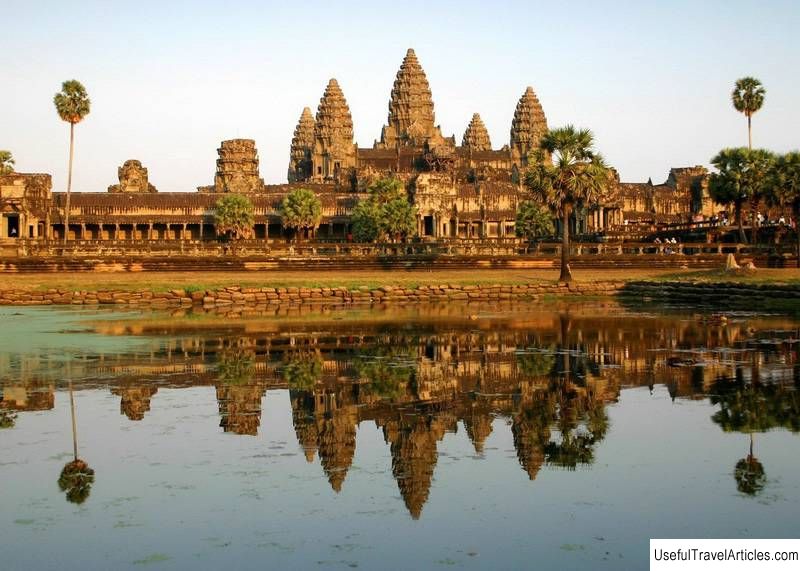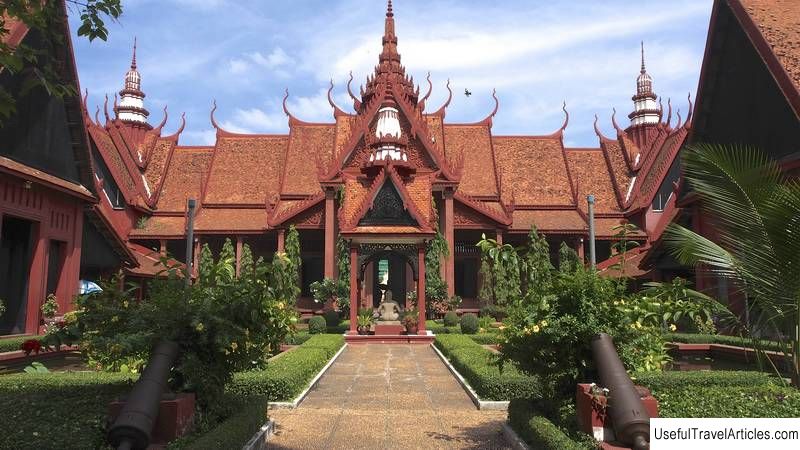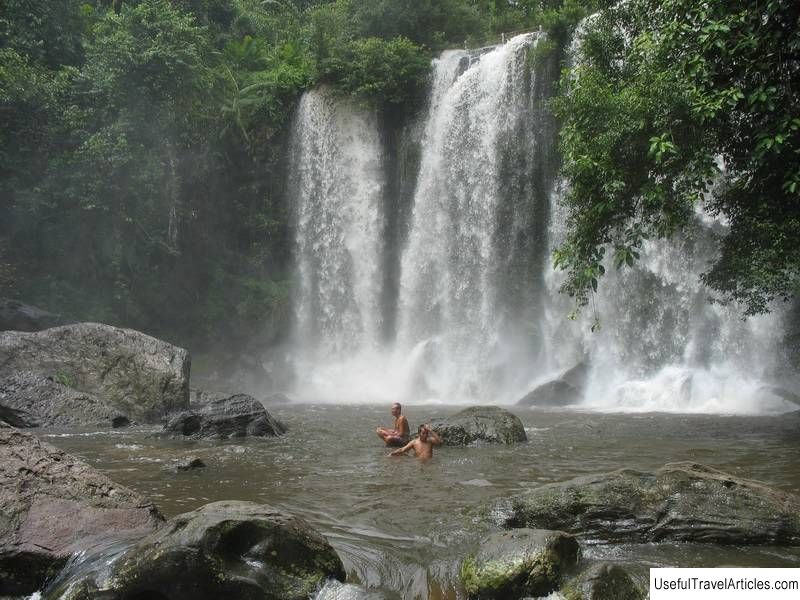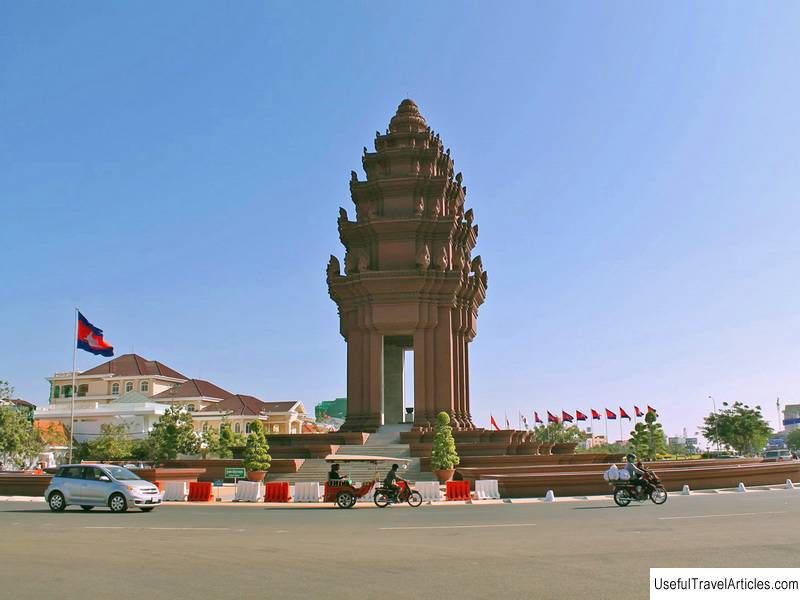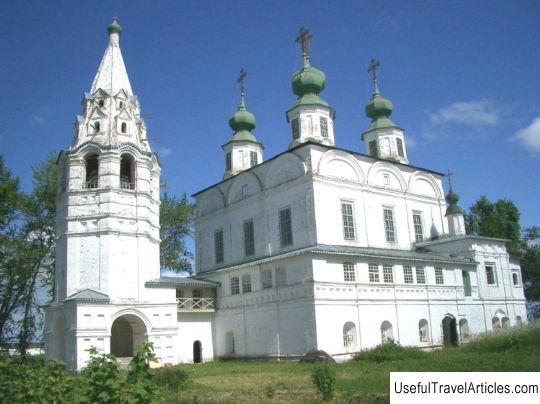Angkor Thom description and photos - Cambodia: Siemrip
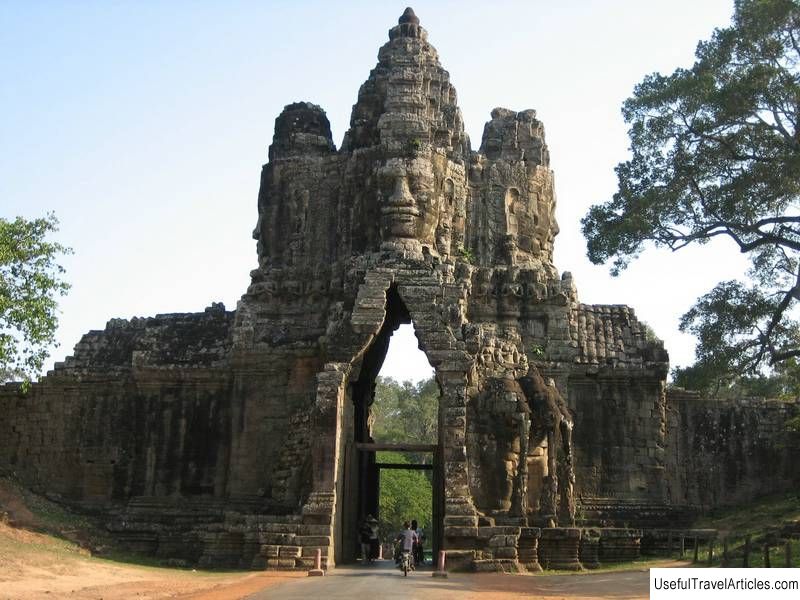
Angkor Thom description and photos - Cambodia: Siemrip. Detailed information about the attraction. Description, photographs and a map showing the nearest significant objects. The title in English is Angkor Thom. Photo and descriptionAngkor Thom ("Great City"), located on the territory of modern Cambodia, was the last and most fortified capital of the Khmer Empire. The city was established at the end of the 12th century by King Jayavarman VII on the banks of the Siemrip River. On a total area of 9 km2, there are several monuments from the early eras, as well as later ones, established by the successors of the king. The complex consists of several structures. Inside the city walls are the temples of Bayon, Pimeanakas, Bapuon, Terrace of the Elephants, Terrace of the Leper King, Tomb of Palilaya, Tep Pranam and Prasat Suor Prat. The southern gate of Angkor Thom is 7.2 km north of Siemirp. and 1.7 km north of the entrance to Angkor Wat. Eight-meter walls of laterite with a parapet in the upper part are surrounded by a ditch. The gates located on the cardinal points lead to the Bayonne temple in the city center. Nearby there are 23 towers with carved faces, they were added to the main structure later and have unclear meaning and are ambiguously interpreted by researchers. Sandstone temples dedicated to Avalokiteshvara have been erected at each corner of the city wall. Each temple is in the shape of a cross with an open porch, the top is crowned with lotuses. A two-tiered base supports the temple; images of female figures are visible in niches and false windows. Most of the ruins of Angkor have large-scale bas-reliefs depicting various gods, goddesses and other creatures from the myths and epics of ancient Hinduism. Also found images of animals - elephants, snakes, fish, monkeys and dragon-like creatures. The Royal Palace, located in the center of Angkor Thom, was built earlier than others and dates back to the first half of the 11th century. The foundation and walls of the palace, as well as the towers at the entrance, have survived, the interior is missing, presumably, they were wooden and did not survive. According to the research of French scientists, the complex of the royal palace included the temple-mountain Pimeanakas, surrounding the pools, living quarters and government offices. Old manuscripts describing Angkor Thom indicated that in the center of the architectural ensemble stood the Golden Tower of Bayon, surrounded by more than twenty smaller towers and several hundred stone chambers. On the east side there was a gilded bridge with two sculptures of lions, eight golden Buddhas were located along the stone chambers. To the north of the Golden Tower was the residence of the king and another tower of gold. The whole complex made an indelible impression on those who first entered its territory. Five entrance gates with towers are among the most photographed monuments of all ancient Cambodian ruins. Each sandstone tower rises 23 meters, decorated with four heads facing in opposite directions. In the lower half of each gate is a bas-relief of an elephant with three heads and a seated Hindu god Indra with lightning bolts in his lower left hand. Inside, a guardhouse is visible on each side. In the lower half of each gate is a bas-relief of an elephant with three heads and a seated Hindu god Indra with lightning bolts in his lower left hand. Inside, a guardhouse is visible on each side. In the lower half of each gate is a bas-relief of an elephant with three heads and a seated Hindu god Indra with lightning bolts in his lower left hand. Inside, a guardhouse is visible on each side.     We also recommend reading Colonel's waterfalls description and photos - Russia - South: Tuapse Topic: Angkor Thom description and photos - Cambodia: Siemrip. |
